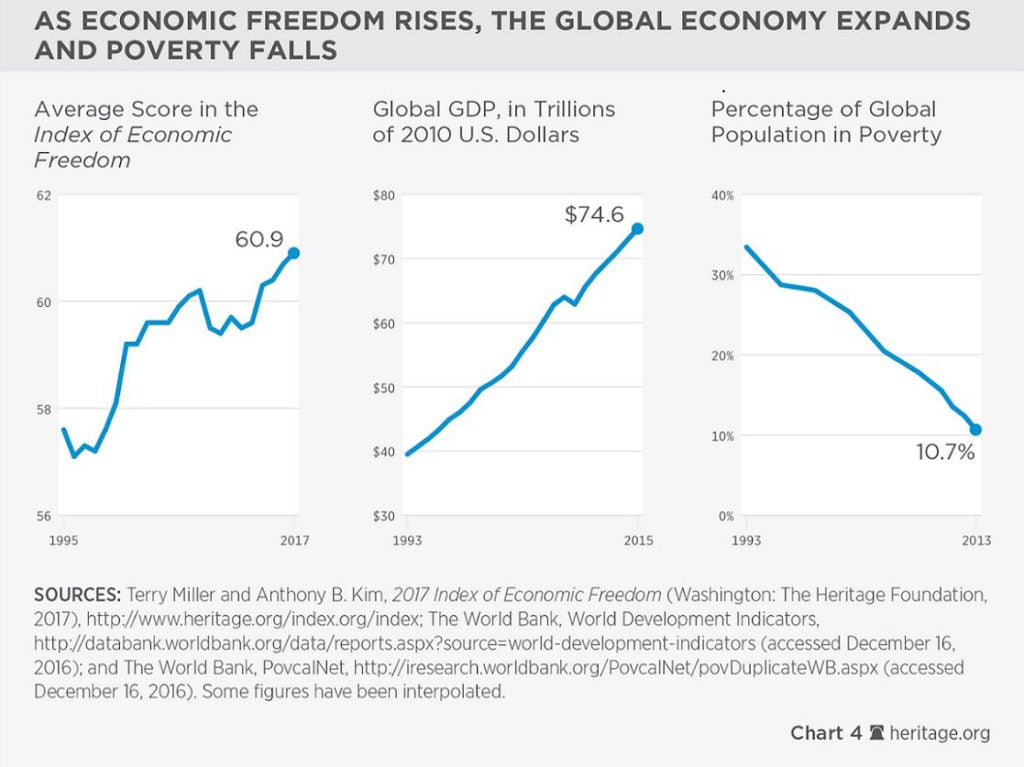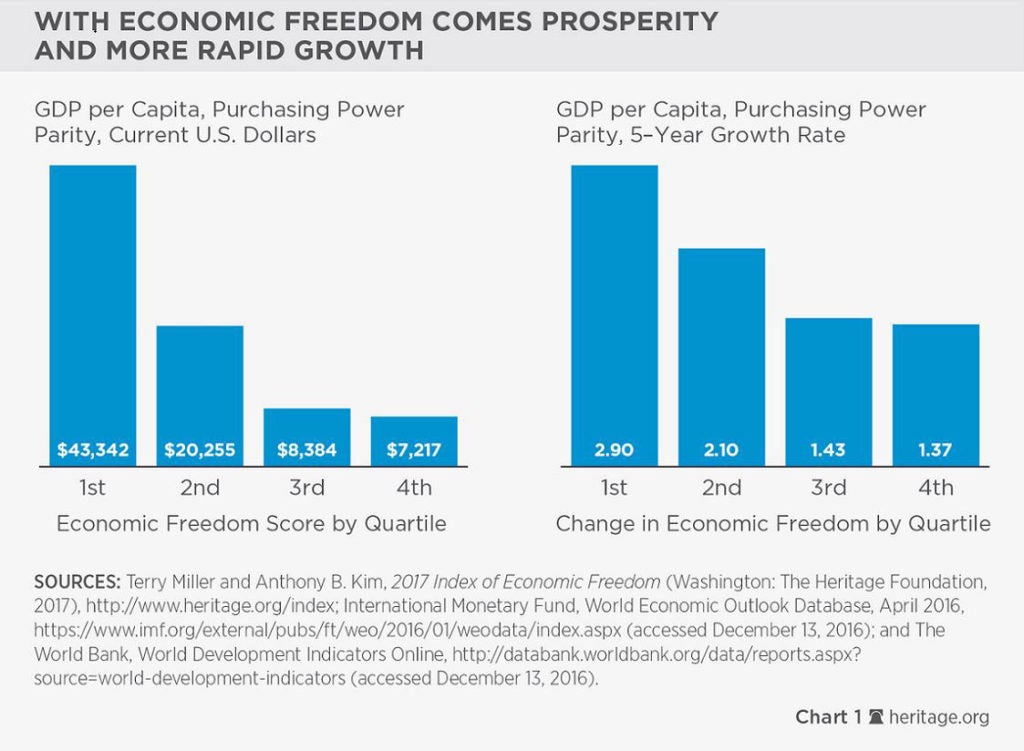Today, many people argue that trade disproportionately hurts poor Americans.
They say free trade creates a wage gap between low- and high-income earners, and constructs barriers that make it increasingly difficult for the less fortunate to climb the economic ladder.
But recent data from The Heritage Foundation shows that this simply is not true.
The Heritage Foundation’s 2017 Index of Economic Freedom shows that removing tariffs and other trade barriers leads to a number of tremendous benefits.
The creation of freer trading conditions establishes a mutually beneficial relationship between both parties—people voluntarily trade with each other only if it is in their own interest.
As a result, those who have greater opportunity to participate in the global exchange of goods and services find themselves with increased prosperity and diminished poverty.

According to the Pew Research Center, from 2001 to 2011, the number of “poor” individuals—those living on less than $2 a day—decreased by 14 percent globally.
During the same period, world trade (as a percentage of gross domestic product) increased by over 9 percent, from 51.5 percent up to 60.7 percent.
This strong correlation between trade freedom and reductions in poverty seems to refute the narrative we often hear. Rather than hurting the poor, the removal of international trade barriers allows millions of people to escape poverty.
A recent report from the World Bank Group gives further support to this correlation. Based on the most recent estimates, while 35 percent of the world’s population lived on less than $1.90 a day in the year 1990, that percentage had dropped to 12.4 percent in 2012.
The percentage dropped even further in the year 2013 to 10.7 percent.

For a practical example of how trade barriers hurt the American poor, consider U.S. import restraints on food and clothing.
These inflict substantial financial burdens on the poor because they drive up the price of these goods, which make up a larger proportion of poor people’s incomes than of wealthy people’s incomes.
The Heritage Foundation’s Patrick Tyrrell and Daren Bakst show the effects of these restraints in their recent special report: Americans paid a 20 percent import tariff on some dairy products in 2016, a whopping 132 percent import tariff on certain peanut products, and up to a 35 percent import tariff on canned tuna.
Reducing or getting rid of tariffs will clearly reduce these prices for consumers, and will relieve a disproportionate amount of pressure from the poor.
But the benefits of economic freedom extend well beyond aiding the poor. The data show a strong correlation between economic freedom and other positive outcomes.
As James M. Roberts and Ryan Olson of The Heritage Foundation report, countries with higher levels of economic freedom have citizens who enjoy a longer life expectancy, take better care of the environment, and spend more time in school—an important factor for poverty reduction.
On trade and economic freedom, the data speak loud and clear. In order to further reduce global poverty, governments should promote economic freedom and allow their citizens to participate in and enjoy the benefits of free trade.
This piece originally appeared in The Daily Signal


